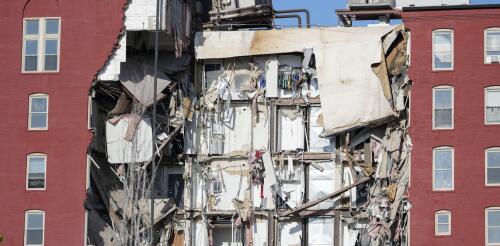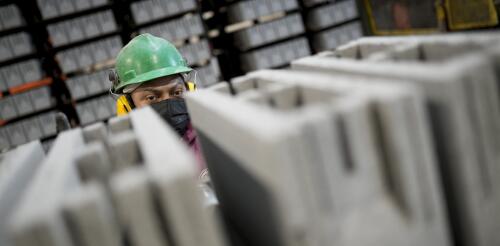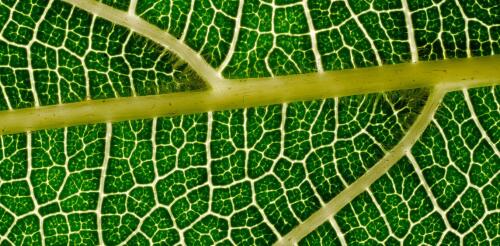environment
Fountains of lava erupted from the Sundhnúkur volcanic system in southwest Iceland on Jan. 14, 2024. As the world watched on webcams and social media, lava flows cut off roads and bubbled from a new fissure that invaded the outskirts of the coastal town of Grindavík, burning down at least three houses in their path. Nearby, construction vehicles that had been working for weeks to build large earthen dams and berms in an attempt to divert the lava’s flow had to pull back. The lava flow on Jan. 14, 2024, with Grindavík in the foreground. Iceland Department of Civil Protection Humans have tried many ways to stop lava in the past, from attempting to freeze it in place by cooling it with sea water, to using explosives to disrupt its supply, to building earthen barriers. It’s too soon to say if Iceland’s earthworks will succeed in saving Grindavík, a town of about 3,...
Four recent catastrophic building collapses and a near miss are raising concerns about the state of America’s aging buildings and questions about who, if anyone, is checking their safety. Many cities have buildings showing signs of aging and in need of repair. In New York City, where a seven-story apartment building partially collapsed in December 2023, the median building age is about 90 years, and many neighborhoods were built before 1900. As a civil engineer, I study building failures, and I have seen how crucial structural inspections and careful maintenance are – and how often the signs of trouble are ignored in the U.S. until a problem becomes a crisis. Too often, it is up to residents to call attention to the risks. A video from 2020 shows moisture stains and evidence of failed repairs at the bottom of the basement level parking garage slab in Champlain Towers South condominium before it collapsed. Fiorella Terenzi. Many...
Capturing carbon dioxide from the air or industries and recycling it can sound like a win-win climate solution. The greenhouse gas stays out of the atmosphere where it can warm the planet, and it avoids the use of more fossil fuels. But not all carbon-capture projects offer the same economic and environmental benefits. In fact, some can actually worsen climate change. I lead the Global CO₂ Initiative at the University of Michigan, where my colleagues and I study how to put captured carbon dioxide (CO₂) to use in ways that help protect the climate. To help figure out which projects will pay off and make these choices easier, we mapped out the pros and cons of the most common carbon sources and uses. Replacing fossil fuels with captured carbon Carbon plays a crucial role in many parts of our lives. Materials such as fertilizer, aviation fuel, textiles, detergents and much more depend on it. But years of research and the climate changes the world is already experienci...
Have you ever wondered about that sharp, green note that hits your nose when you mow the lawn or cut flower stems? Those are green leaf volatiles, or GLVs: easily evaporated oils that plants use to communicate with other plants and defend themselves against herbivores or pathogens like bacteria or fungi. Almost every green plant can quickly synthesize and release GLVs when attacked, both directly warding off attackers as well as indirectly attracting predators of herbivores like insects and priming the plant’s other defense mechanisms. Researchers know that GLVs play an important role in protecting plants, but how they work remains unclear. I am a biochemistry researcher, and through a collaboration between the Wang Lab and Stratmann Lab of the University of South Carolina, my colleagues and I study how plant cells deploy green leaf volatiles. In our recently published research, we identified the potential signaling pathways GLVs use to induce defense responses in tomato c...
Sea level rise has already put coastal cities on notice thanks to increasing storm surges and even sunny day flooding at high tide. These challenges will continue to grow because global projections point to a mean sea level rise of at least one foot above year-2000 levels by the end of this century. However, many cities are facing another factor making them even more vulnerable to rising waters: land subsidence. The three of us – Pei-Chin Wu, Meng (Matt) Wei and Steven D'Hondt – are scientists at the University of Rhode Island Graduate School of Oceanography working with the U.S. Geological Survey to research challenges facing waterfront cities. Our findings indicate that land is sinking faster than sea levels are rising in many coastal cities throughout the world. By using radar images of the Earth’s surface collected from orbiting satellites, we measured subsidence rates in 99 coastal cities worldwide. These rates are highly variable within cities and from...



